As a traveller, I often recommend and suggest destinations to people – some very touristy and some off the beaten track. Though Ive stayed in several hotels, resorts, homestays, very few of them stick in my head. I often prefer going to the same destination, but not always to the same property. However, its been a bit different with JLR or Jungle Lodges and Resorts.
In many ways, my association with wild life enthusiasts started from here and this, in many ways has transformed me from a simple adventure seeking tourist to a birder and wild life enthusiast with a focus on conservation. I am not an activist, but my perspective on wild life has changed. I travel now to enjoy the beauty of the forests, understand biodiversities, look for birds and butterflies and am happy to just breathe the fresh, unpolluted air. 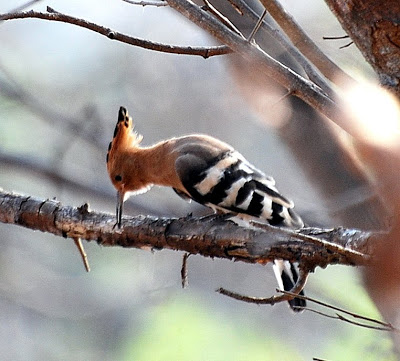
My first brush with JLR was in Bheemeswari, more than a decade ago when I did a TV shoot on one of their properties, Bheemeswari a decade ago. I later visited many properties of theirs set in some of the most beautiful locations of wild Karnataka and went on to even doing a Naturalist Training Programme conducted by their Chief Naturalist, Karthikeyan .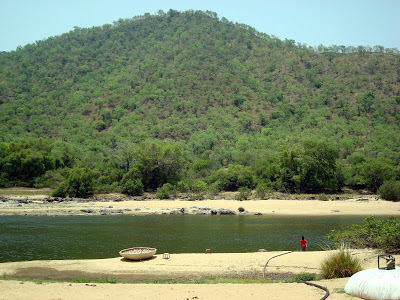
Run by IFS officers under the government of Karnataka by IFS officers, JLR started with the famous Kabini lodge way back in the 70s when it was managed by one man – Papa or the late Colonel Wakefield before the givernment took it over. JLR just celebrated its 30th year and on this occasion, the CM released a coffee table book – Wild Vistas which had one of my contributions on Bandipur. A version of the story has been published here.Published by JLR , it was the initiative of Kunal Sharma, the resident editor of Kabini and it features some great pictures taken by some well known wildlife photographers.
Another magazine , Jungle Tales was also released by the Tourism Minister. Written by several travel writers and edited by a noted travel writer, Susheela Nair, yours truly had also contributed two stories for the magazine – one on my favourite property Galibore and another on Doddamakkali. Both are fishing camps set on the banks of the river Cauvery and is sought after by anglers world wide as its home to the famous game fish, Mahsheer. Here is my story on Galibore.
It is well past twilight when I enter the portals of Galibore Fishing Camp. The darkness has just set in and there is a nip in the air. Sitting outside my tent and sipping a hot cup of tea, I can hear the Cauvery gushing down the rocks, lashing at them as she flows down the hill. The moon shines through the silhouettes of the trees. A row of lanterns light up the camp, as I see the outlines of the other tents. An owl hoots in the distance. And all this while, I happen to be the only one in the camp savouring the wild experience for the other guests are away at their favourite sport – angling
Galibore on the banks of the river Cauvery is completely off the tourist track. A detour from Bheemeshwari, it is located further downstream on the river, closer to Sangama. The camp is quiet, but the action is happening elsewhere on the river, for the angling season has just begun. Starting December, domestic and international anglers make a beeline here to match their wits against the most powerful game fish, Mahseer . And it is not just in Galibore. The entire stretch of Cauvery for about 40 kms is home to Billimeen as its locally called and come October, the camps here are flocked by anglers who practice responsible angling or the concept of catch and release .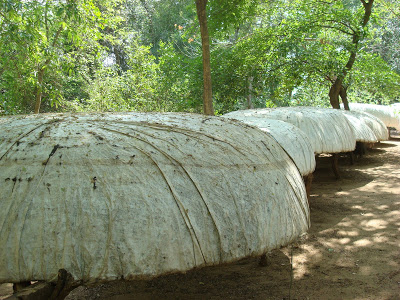
The rain descends as a light thunderstorm drench the camp. I chat up with the manager and the anglers soon join in . There is a group from Hyderabad and another from Bangalore and stories fill the air as they exchange their adventures of the day. “ I caught a 20 pounder ,” says one as congratulations are in order. Another says he caught three fish, but of a smaller size. While others lament that all that they got was a nibble or two at their lines. I join in the conversation and am filled in with more fishing tales.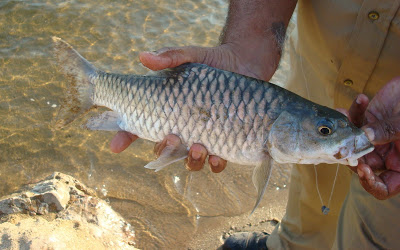
The Mahseer , weighing more than 100 lbs is nicknamed as the tiger among fresh water fish as it gives a fight before it surrenders. Sometimes the anglers are at the receiving end. “ Mind you, it is very strong , it tugged at my line today and there, my line was broken, “ says Mr Reddy who has been coming here regularly with his friends and family for more than a decade. “This camp is remote and wild and I would like it to stay this way and the gillis here are very knowledgeable,” he adds .
The rain continues to pour as Kumar, a former manager at Galibore tells me that an international angler had almost come close to beating the Guiness Records by landing a 118 pounder at the camp more than seven years ago. The World record he says then was 120 lbs. Another Indian angler had landed 104 lbs.
The trick he says is to make the fish tired by playing with it.” Sometimes you think you have caught it, but the fish drags the line downstream and then you start chasing it in a coracle and then the tug of war starts between you and the fish” he narrates, adding that this is the thrill behind angling , although several times, it may just be a wait and watch game. 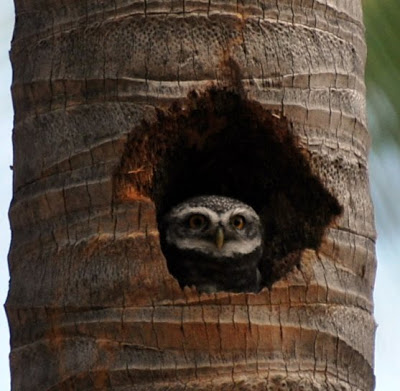
The owl hoots again . The bon fire is lit as animated conversations light up the air. “We have seen elephants crossing the river while fishing here , “ says Mr. Reddy. Gillies narrate stories of being attacked by tuskers, sometimes even for ragi, which is used as bait for the Mahseer. As the voices get louder Kumar interrupts saying, “ Ever seen a pack of wild pigs attack a leopard ? “ He narrates an experience where the leopard with a piglet climbed a tree pursued by a pack of wild pigs . “It lost its balance, dropped the piglet and disappeared into the forest , “ he adds. Besides wild pigs, jackals, sambhars are known to have wandered around the campus as well.
The breeze soon lulls me to sleep. I bid goodnight to the anglers, and attempt to sleep, but the denizens of the forest have other plans. Woken up by a medley of sounds, I venture out in the wee hours of the morning and see a herd of spotted deer catch the light of my torch barely a few feet away from my tent. They leap into the dark forest as I decide to stroll for a while .
Morning dawns, and with it the day breaks into a riot of colours. I look up to see tall trees stretch themselves and create such a canopy that I can hardly see the sky. The grizzled giant squirrel leaps from the branches, the birds call out to each other and the camp comes to life. The coracles are straddled onto the vehicles, the rods are ready and the baits are packed . Besides the ragi, the fish are lured with live bait as well in the form of crab or chiruva or small fish. The anglers meanwhile are planning their locations for the day. The Hyra or the pool upstream, the camp pool and the crocodile pool are the chosen destinations for their tryst with the Mahseer.
I wish them luck and try my hand at fishing at the camp pool. 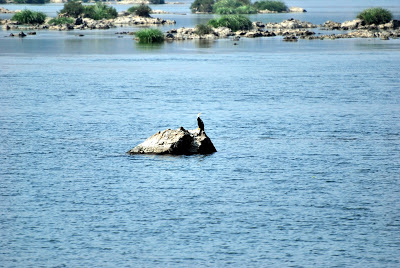
The Cauvery is at her best, blue and beautiful. Using ragi as the bait, I lower the rod in the water, learn a few techniques and wait. A couple of tugs, but my luck fails me. However, my attention is soon diverted by an otter on the other bank. The monkeys jump around the trees as I see something in turquoise blue hiding behind the leaves . I leave the rod to the gillie and pick up my binoculars and the amateur birder in me comes to the fore. There flitting in the leaves was a verditer flycatcher. Another pair of birds fly close to my tent. Blue and orange, they are my favourite tickell’s blue flycatcher . I catch a bit of a long white tail hanging from a branch there is the paradise fly catcher. My luck seems to have turned around, having spotted the three species of the flycatcher. 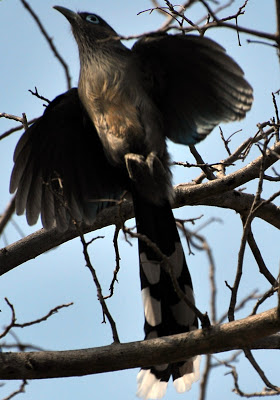
Soon, the winged species grab my attention. I spot the flame backed woodpecker, the blue faced malkova , the white bellied drongo, the common kingfisher among others. A shikra turns its face away from me while the jungle fowl calls out. The raptors, the water birds come out into the open as the sun warms them. A lone coracle lies on the white sands. I lean against it and lose myself in its flow gazing into the open, lost in a different world of fins and feathers..
FACT FILE
Address : Galibore Fishing and Nature Camp, Uyamvalli Post, Sangam, Kanakpura Taluk, Bangalore district Rural
Tel: 08231694305
Getting there: Galibore is 100 kms from Bangalore. Travel down the Kanalpura road towards Kanakpura town and take a deviation to Sangama- the confluence of the rivers, Arkavathy and Cauvery. Galibore is further 10 kms from the Sangama .Even though it’s a mud road, its one of the best stretches for birding.
Best season: The months between November to February will be the bst time to visit as it is also ideal for birding and angling. Angling starts here at the end of December and eends by February .
What to do and see: Trekking, birding, fishing, angling, water rafting and coracle rides

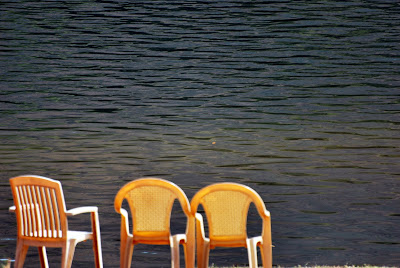
Loved the pictures Lakshmi, specially the bird ones.
Awesome post and loved the pics… the owl, and ofcourse Hoopoe :))
Beautiful shots. Wildlife tour that I have been wanting to do for a long time now.
yea, the birds pics are beautiful specially the owl sitting in the bark 🙂
I’m amazed at how you capture these great shots- especially the ones of the birds and the owl!! Just amazing!!
Your post leaves me restless now as i want to see it all.Galibore…anglers…Mahseer…coracle rides…the birds…water rafting.
Wonderful shots and thanks for the written words too which is instrumental now in igniting my desire to stay in JLR and watch serious angling.:)
good blog
Very beautiful pictures. I will save some of them in my computer.
A Well done here.. lovely pics.
This is really very good photography you have done. and about “INDIA” what we can say , this is a country of different cultures ,different languages , if you want to explore the mysterious beauty of INDIA then
Book cheap air tickets to india
i enjoy reading your posts. keep up the good work. post those photos.
lovely images!
Galibore is 95 km from Bangalore, 16 km away from Bheemeshwari. The cottages are more of tent-cover over a concrete platform. Quite comfortable. The lack of proper electricity makes it a “close-to-nature” experience. During the nights, one has to use the lantern to find one’s way.
Having fun with friends n family, or enjoying a book lying on the hammock or fishing in the river, or sitting on the rocks in the river, whichever way one chooses to unwind, this is an ideal place and worth a visit.
Stunning images, and thanks for letting us know about this place
Awesome pictures. Really I am so excited to go their.
India is full of mystery. and Karnataka is a very beautiful place for the tourist. The months between November to February will be the best time to visit as it is also ideal for birding.
Nowhere have PLASTIC chairs looked so good
Hi dear really your blog postings are very good and it will usefull to all the peoples who are looking for Wildlife Safari
when i was searching the same i got good inforation about the best Bandipur resort
hi i visit br hills with my wife really we enjoyed a lot over there and bandipur resorts realy good place ill vist one more
time for sure